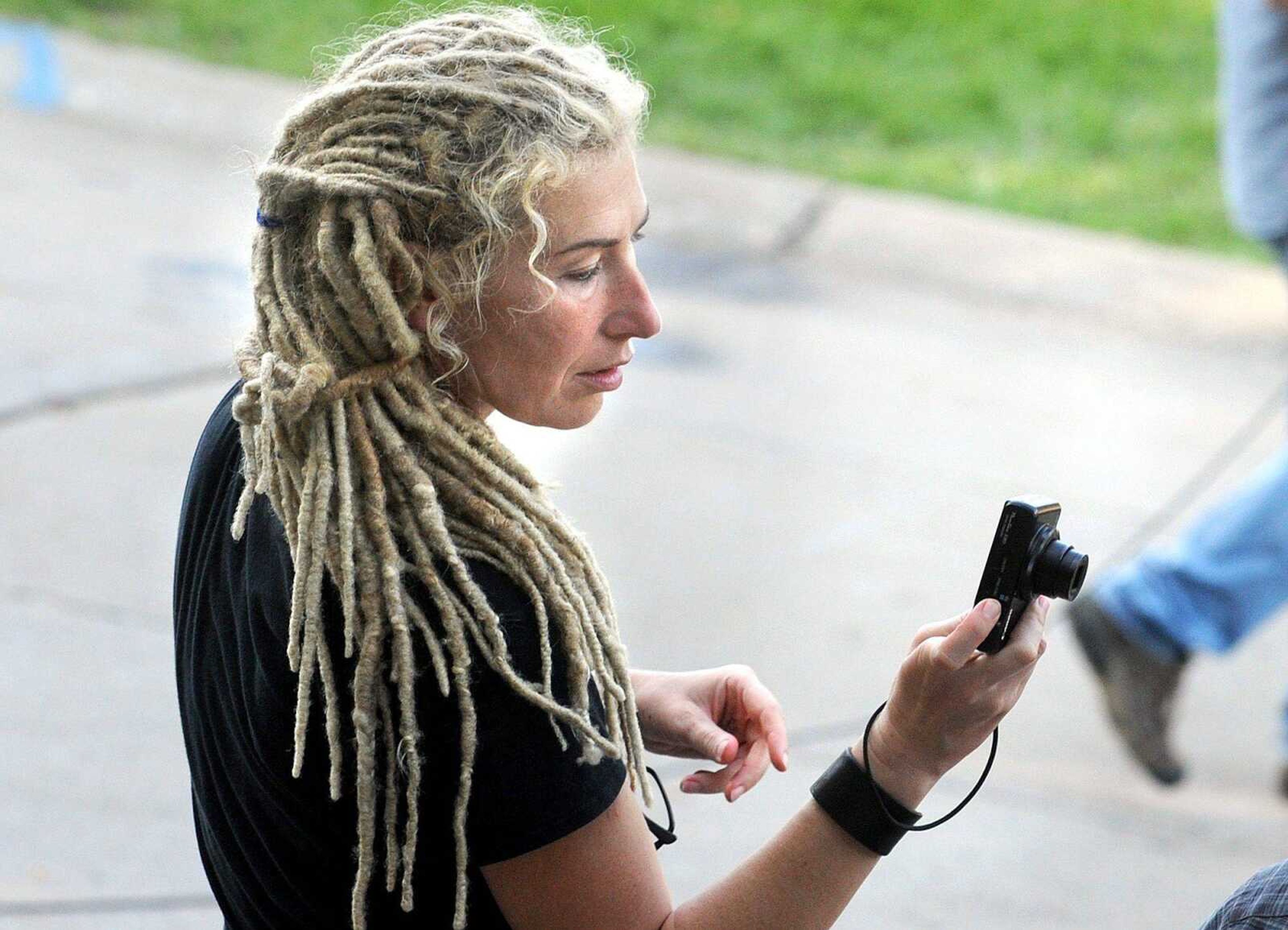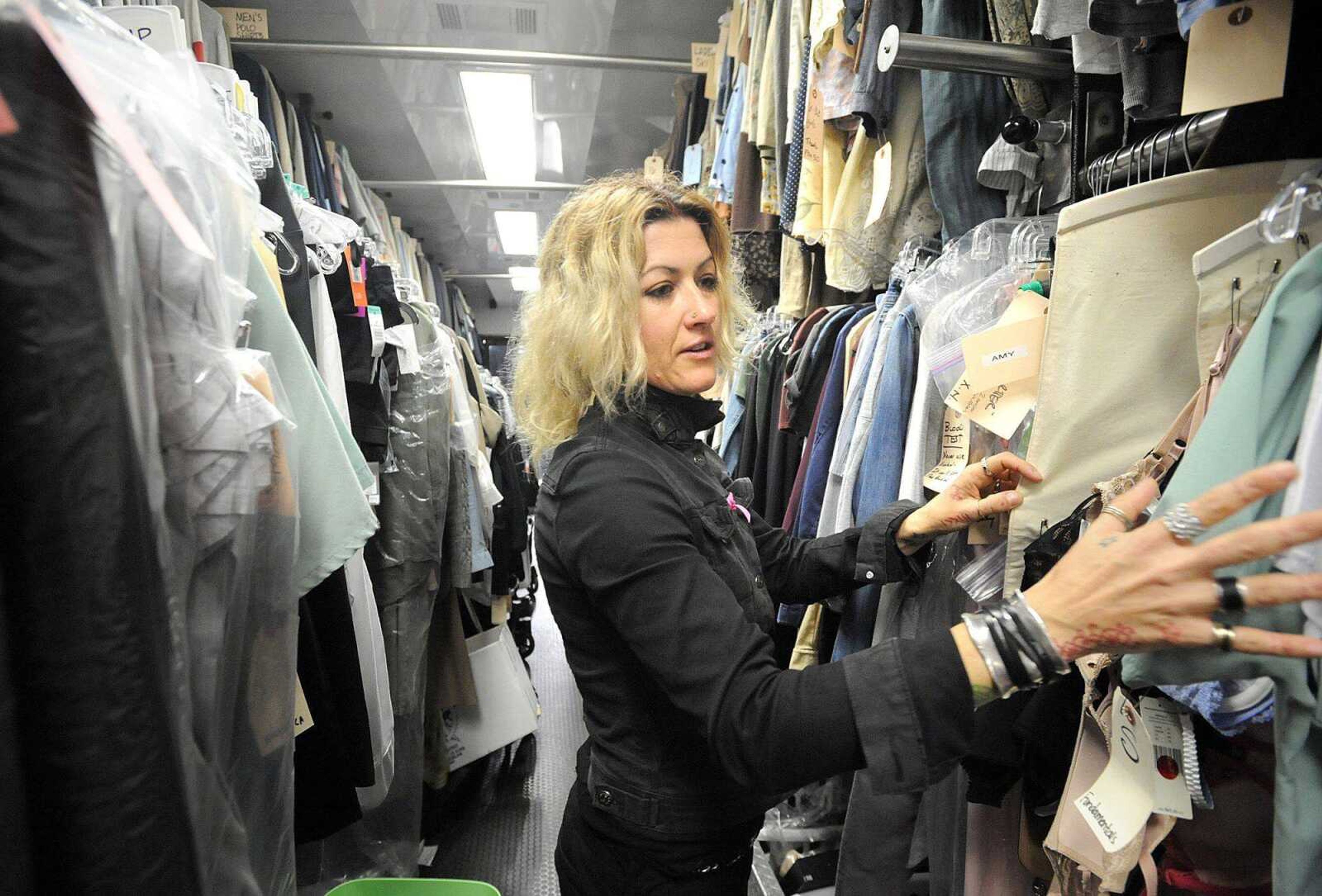Wardrobe, makeup departments play key role in 'Gone Girl'
For outsiders, it may seem the people responsible for the hair, makeup and wardrobe in a film have the glamorous jobs. In fact, the wardrobe and hair and makeup teams, who work some of the longest hours, play a pivotal role in helping actors connect with their characters...
For outsiders, it may seem the people responsible for the hair, makeup and wardrobe in a film have the glamorous jobs.
In fact, the wardrobe and hair and makeup teams, who work some of the longest hours, play a pivotal role in helping actors connect with their characters.
"We want to give [the actors] clothes that can help them get into character," said Trish Summerville, costume designer for "Gone Girl," which finished filming in Cape Girardeau last week.
Summerville uses Kim Dickens, who plays Detective Rhonda Boney in the film, as an example: "It's bare bones. We gave her three suits and sensible shoes."
It fits the character of a weary, overworked law enforcement officer.

It's not just about clothes. Makeup also can help an actor connect to a role.
"A lot of what I like to do is break down the psychology" of a character, said Kate Biscoe, key makeup artist for "Gone Girl."
Biscoe has a degree in French literature and said it wasn't a weird jump to doing makeup for movies.
"It's character analysis," she said. "We decide what to manifest or hold back with a character."
For instance, if a character is going to have a heart attack and die at the end of the movie, the makeup department can make him or her look progressively sicker, so the audience isn't surprised. Or the character can look healthier and happier throughout the movie, so the death isn't as expected.
"It's not just cosmetic," she said. "It's about character development."
Part of that character development involves working closely with director David Fincher.
"It's been great" working with him, Biscoe said. "He pushes you to become better. ... He holds such a high standard; it's nice to have him recognize hard work."
Summerville worked with Fincher to decide the colors and palette for the wardrobe.
"We started out with a muted color palette," Summerville said. "But David said he wanted bright, summer clothes."
Some of the extras for that day of shooting wore red, white and blue clothing -- the scene took place just after the Fourth of July.
But it's not just about the color; the appearance of the clothes also is important.
"I think I'm keeping your Goodwill and Teen Challenge in business," Summerville said.
She and Fincher didn't want clothes that look new: no creases in pants or boxy shirt shoulders. She used some tricks, such as tying sleeves together or putting kidney beans in pockets to make clothes look more worn.
The teams responsible for wardrobe and hair and makeup are among the first on the job and the last to leave when shooting wraps for the day.
"We're close to the first," Biscoe said. The drivers arrive before the hair and makeup staff to open the trailer and get everything turned on.
Biscoe's team starts its work the night before, studying the call sheet for the next day's shooting.
"We always let the [assistant director] know if we have a special effect to schedule," she said. "We wouldn't want to shoot a scene where a character is wearing a wig, then no wig, then back to the wig. We try to make it more efficient" when scheduling allows.
Continuity also is a major concern for both departments: They keep detailed notes to ensure consistency with a character's appearance. The hair and makeup team stay on set, watching each take to make sure an actor doesn't need a touch-up.
As for Summerville's wardrobe department, she and her team write meticulous descriptions of every outfit worn on film. The continuity books are arranged by actor and scenes and broken down by change numbers.
"We write notes after it's been on camera and is already on film," Summerville said. The notes include everything from the brand of jeans to a description of the jewelry to how many times a shirt sleeve is rolled.
In addition to managing the wardrobe for 42 principal actors, which includes doing fittings and pulling wardrobe lineups each day, Summerville oversees wardrobe for the extras.
Extras often are asked to provide their own wardrobe, based on specs provided by Summerville's department.
"We give them a basic idea," she said. "But sometimes it's lost in translation."
In those cases, the crew pulls clothes to supplement the extra's wardrobe. From then on, those articles of clothing are hung and tagged with that extra's number.
Continuity among extras also falls to Summerville's department. During shooting of "Gone Girl," an extra who was prominent in a scene told filmmakers he wouldn't be available the next day because his wife was having their baby.
"We had to buy his shorts off him," Summerville said, and give them to an extra who had the same build and coloring.
Biscoe's department also works with the extras. During "Gone Girl," local hairstylists and makeup artists were brought in to help at a portable hair and makeup station set up for the extras.
The hair and makeup trailer where the principal actors are prepped has four stations.
"A lot of what we do is making actors happy," Biscoe said. "We keep the trailer nice and calm, with appropriate music so they can read lines or prepare for the scene. We want it to be a sanctuary."
She said it takes an average of 45 minutes per female actor and 30 minutes per male actor to get them ready for filming.
"With the men, it's not necessarily makeup, but you have to shave them, apply sunscreen, maybe cover tattoos."
The wardrobe trailer is a testament to organization: clothes upon clothes sorted by actor and tagged for scenes and change numbers. It also houses Summerville's office and, perhaps most importantly, a washer and dryer.
"The last film we did in Sweden ["The Girl With the Dragon Tattoo"], there were no washers and dryers," Summerville said. "We have to wash clothes every day."
Trailers for both departments have to be packed up and moved depending on the next day's shooting schedule. After shooting ends for the day, the teams have to wrap everything and load the trailers.
And prepare to start the process all over again.
hcollier@semissourian.com
388-3631
Connect with the Southeast Missourian Newsroom:
For corrections to this story or other insights for the editor, click here. To submit a letter to the editor, click here. To learn about the Southeast Missourian’s AI Policy, click here.










